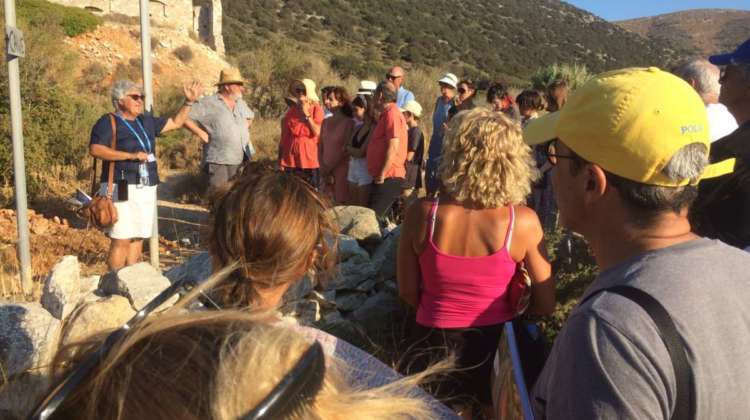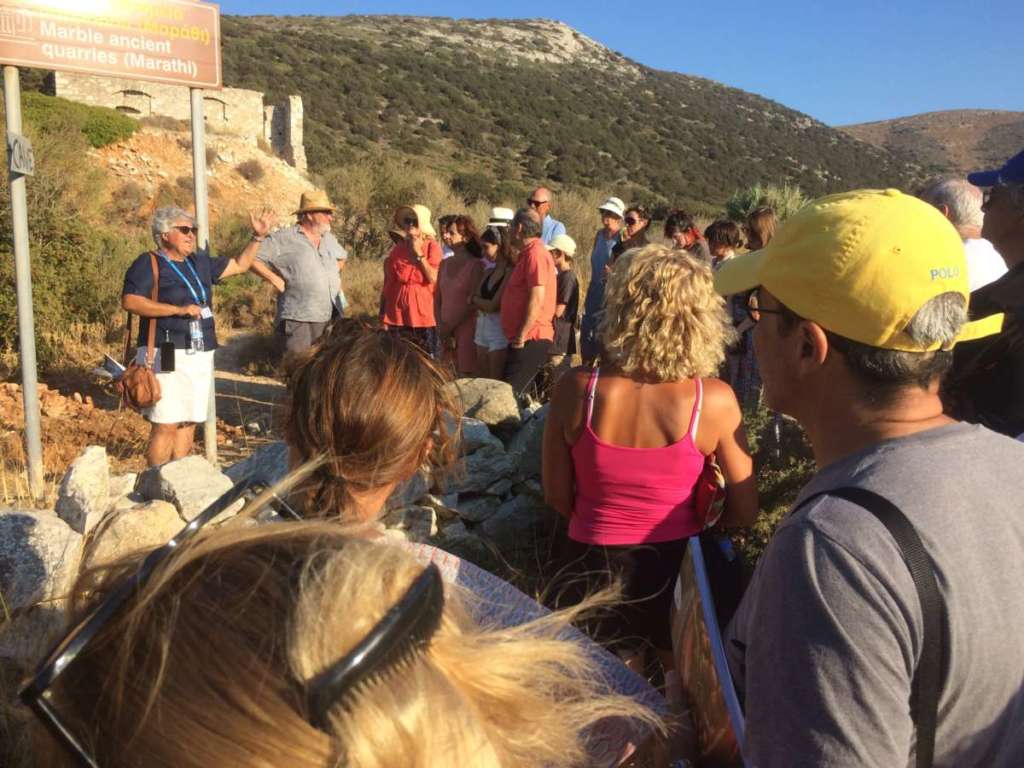
Monuments. Monuments of nature. Human-made monuments. We admire them, list them, number them, compare them, photograph them, assess them, and, of late, we fight to prevent them from disappearing. Paros, however, is endowed with monuments that unite both natural and human creation; the ancient marble quarries, which should not disappear but be protected, stay accessible to us but also to future generations.
In the context of raising awareness in the residents and visitors of the island regarding the value and importance of the ancient marble quarries of Paros, public visits and guided tours are constantly increasing, mainly to the quarries in Marathi, known in geological and archaeological research and bibliography with the title Paros I[1], the underground quarries, from where the famous lychnite was mined. In the related visits organised by the Association “Friends of Paros & Antiparos “, numerous groups of visitors enjoyed the guided tours and were often impressed by the importance and value of the quarries. It has, therefore, been decided to publish a series of articles in the bulletin of the Association on the topic of the quarries, in order to benefit readers who did not have the opportunity to attend the guided tours[2], but also to encourage them to participate in future guided tours being planned.
The ancient quarries are a great national capital, since they are the places from which the basic material for the structure of many monuments and masterpieces of antiquity came. Humans were fascinated by stone and marble, materials which had a significant impact on aesthetics, turning inanimate structures into works of art. The quarries combine geology, technology, art, economic history and they provide indelible traces of History.
It is considered certain that the extraction, transport and trade of marble were the most important factors of wealth for Paros and the main reason for its expansion with colonies in quite remote areas. The economic prosperity of Paros before and after the Persian wars is known from many ancient sources. Characteristically, Paros contributed to the Athenian Alliance the highest monetary contribution of 30 talents[3], higher than any other islandic city-state.[4]
In Paros both types of quarries have been found, surface and underground. The underground quarries at Marathi, known as the Grotto of the Nymphs and Pan’s Grotto, are known for the high-quality marble mined from them from the early 6th century BC until the Imperial times. The marble that came from these underground quarries is called lychnite, while the marble that came from the surface quarries is usually called island or islandic marble. Future articles will provide information on the composition, quality and properties of this marble as well as the mining methods used in antiquity, together with some of the archaeological evidence found in the tunnels.
[1] Respectively, there are also surface quarries; Paros II in Lakkoi and Paros III north of Agios Minas.
[2] All tours are conducted by officially licensed tourist guides.
[3] 1 talent = a unit of weight and its respective monetary value for gold, silver and copper.
[4] Naxos, though much larger, contributed 15 talents.


Leave a Reply